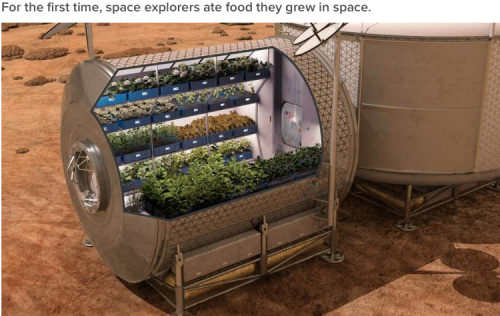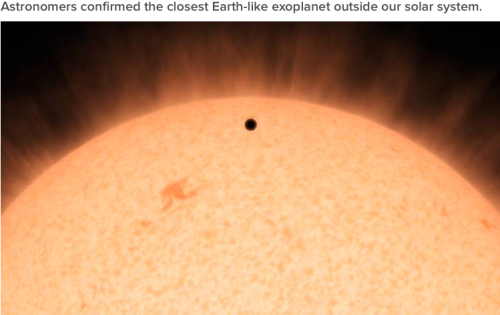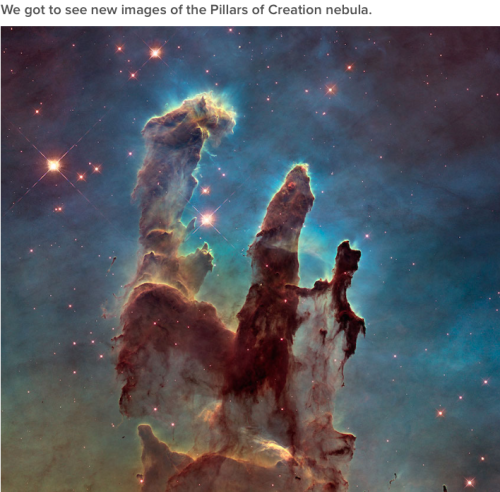Dope Af
Dope af
Hitchhiking a Ride to Space
Have you ever packed for a long trip with a friend and ran out of space in your suitcase? Maybe your friend was nice and let your spare items hitchhike a ride in their bag? The following science experiments are doing something similar on our Space Launch System rocket.

Our Space Launch System (SLS) will be the most powerful rocket we’ve ever built and will enable astronauts in the Orion spacecraft to travel deeper into the solar system. This advanced launch vehicle will launch astronauts to an asteroid and eventually to Mars, while opening new possibilities for other payloads including robotic scientific missions to places like Mars, Saturn and Jupiter.

The primary goal of SLS and the Orion spacecraft is to launch future crewed, deep space missions. That said, an added bonus of this powerful rocket is the extra science it can carry. On it’s first mission (known as Exploration Mission-1, EM-1) SLS will carry 13 CubeSats (small satellites, each the size of a large shoebox) on its first flight as secondary payloads. These small satellites will perform various in-space experiments. In a way, these 13 CubeSats are ‘space hitchhikers’, catching a ride to deep space where they can gather data valuable to future exploration missions.

How were these 13 experiments selected? Great question. They were selected through a series of announcements of flight opportunities, a public contest and negations with our international partners.
These secondary payloads have a vast array of functions, from taking pictures of asteroids, to using yeast to detect impacts of deep-space radiation. Each month we will highlight one of these experiments on Tumblr and talk about all the exciting science they will do. Just to give you an idea of what these shoebox-sized satellites will do, we’ll give you a preview:
1. NEA Scout

NEA Scout, stands for: Near-Earth Asteroid Scout. This CubeSat will investigate an asteroid, taking pictures and observe its position in space.
2. BioSentinel

BioSentinel will be the first time living organisms have traveled to deep space in more than 40 years. It will use yeast to detect, measure and compare the impact of deep-space radiation on living organisms over long durations in deep space.
3. Lunar Flashlight

This experiment will look for ice deposits and identify locations where resources may be extracted from the lunar surface. It will demonstrate the capability to scout for useful materials and resources from lunar orbit.
4. Skyfire

Lockheed Martin’s Skyfire will perform a lunar flyby, collecting data to address both Moon and Mars Strategic Knowledge Gaps, or gaps in information required to reduce risk, increase effectiveness and improve the design of robotic and human space exploration missions, for surface characterization, remote sensing and site selection.
5. Lunar IceCube

Morehead State University’s Lunar IceCube will look for water in ice, liquid and vapor forms from a very low orbit of only 62 miles above the surface of the moon. The ability to search for useful resources can potentially help astronauts manufacture fuel and necessities to sustain a crew.
6. CuSP

The CubeSat mission to study Solar Particles, or CuSP, will be the first protype of an interplanetary CubeSat space weather station. It will observe space weather events hours before they reach Earth.
7. Luna-H-Map

Lunar Polar Hydrogen Mapper (LunaH) will enter a polar orbit around the moon with a low altitude. From there, it will produce maps of near-surface hydrogen.
8, 9, 10. Three Tournament Payloads

Three of the payloads riding along on this journey will be the winners of the Ground Tournaments portion of our CubeQuest Challenge. This challenge is designed to foster innovation in small spacecraft propulsion and communications techniques. Learn more about this challenge HERE.
11, 12, 13. International Partners
The remaining three payloads are reserved for international partners, and will be announced at a later time.
To stay updated on these experiments, visit: http://www.nasa.gov/launching-science-and-technology.html
Make sure to follow us on Tumblr for your regular dose of space: http://nasa.tumblr.com
More Posts from I-lik3-giants and Others
i love this

My friends and I were going to make a Zine, our first one being about sex on drugs. This was my contribution. The Zine never made it but I want to share anyways.










If you couldn’t tell already, NASA is having a great year. From Pluto to food grown in space, even in the face of budget cuts, the nation’s space agency had some stellar highlights. Most mysteriously of all, a spacecraft found two eerily bright lights on a distant dwarf planet.
This is so cute!!


Is she naked because you love her or do you love her because shes naked?
(via gedankenlyrik)
What’s Up for November?

November weather can be challenging for backyard astronomers, but the moon is a reliable target, even when there are clouds.
Did you know that the moon takes about 29 days to go around the Earth once? It also takes the moon about 29 days to spin on its axis. This causes the same side of the moon to always face Earth.

On Nov. 3, the moon reaches last quarter when it rises at midnight and sets at noon. This is a great time to see the moon in the morning sky.

On Nov. 11, the new moon isn’t visible, because it’s between Earth and the sun, and the unlit side faces Earth. In the days after the new moon, the slender crescent gets bigger and brighter. Look just after sunset on Nov. 13 and 14 near the setting sun in the western sky.

The next phase on Nov. 19 is called the first quarter, because the moon has traveled one quarter of its 29-day orbit around Earth. The moon rises at noon and sets at midnight, so you can see it in the afternoon sky. It will rise higher in the sky after dark. That’s when you can look for the areas where four of the six Apollo missions landed on the moon! You won’t see the landers, flag or footprints, but it’s fun and easy to see these historic places with your own eyes or with binoculars.

To see the area: Look for three dark, smooth maria, or seas. The middle one is the Sea of Tranquility. Apollo 11 landed very near a bright crater on the edge of this mare in 1969. The Apollo 15, 16 and 17 landing areas form the points of a triangle above and below the Apollo 11 site.

On Nov. 25, you can see the full moon phase, which occurs on the 14th day of the lunar cycle. The moon will rise at sunset and will be visible all night long, setting at sunrise.

On Thanksgiving (Nov. 26), the 15-day-old moon will rise an hour after sunset. You may even see some interesting features! And this is a great time to see the impact rays of some of the larger craters.

Make sure to follow us on Tumblr for your regular dose of space: http://nasa.tumblr.com
'Let's lie very still and quiet and hold each other and not think at all.'
Ernest Hemingway, The Garden of Eden (via klytemnestre)

Sarah Silverman
fantasy
I catch myself staring a little too long. I can't help it that among a crowd of despicable teenage boys reeking of sweat and ignorance, there you sit, with your cunning smile and your green eyes that are forever fixed in an expression of mockery toward every absurdity in this high school. My mind cannot help but wander to the place where I am alone with you. With led zeppelin in the background, we laugh about all the mindless morons who are far behind us. We curse capitalism, we sigh, and our eyes lock.
I am about to tell you how relieved I am to have found someone to relate to, when you glance down at my chest, unashamedly letting your eyes roll up and down my body. I look down and silently chuckle. "I'm sorry if you're uncomfortable. I'm just amazed by your beautiful body that matches your beautiful mind." you say to me in a hoarse voice. I smile a great big smile. "Similar to the mind, the body is most appreciated when explored." I tell you as I take your hand in mine, slowly bringing it up to my chest. I inch closer to you on the bed, placing your hand on my breast. I look at you with a look of innocence and of desire. Your breathing becomes a bit shallow. I laugh, and lightly graze my fingers up your thigh, walking each finger back down. I run my hands over your thigh, nice and slow, watching your mouth open slightly and your leg twitch. You bite your lip. Your other hand is on my chest now, you are squeezing my breasts and beginning to unbutton my shirt. I run my hand over the bulge in your shorts, lingering there..you breathe in sharply and laugh nervously. I lean over, and whisper into your ear: "I want you to take control."
Immediately your hands are on my throat. I am lying down and you are kneeling over me, one hand exploring this sensitive newfound territory; my curves, my skin. You rub my inner thigh and I let out a small moan. You look at me, and you tease me, tickling my thighs some more. "You like that?" you ask me as your heart beats faster and harder, watching me squirm and sigh with delight. I nod. "Mm- uh huh," is what I manage to reply. You are running your hands up and down my legs, making me crazy.
You look at me, place your hand on my stomach, and slowly slide down until your face is between my legs. You pull my underwear to the side and put your mouth as close to me as you can. You breathe. The hot air makes me twitch. You stay like this for what feels like forever until you finally decide to flick your tongue against my pussy. You flick up and down, up and down. "Ooh, just like that. Y-yes, oh fuck yeah right there," I exclaim. You love it when I talk dirty.
You pull away, and begin to kiss my thighs. You trace your tongue all the way from my knee to my innermost upper thigh. You then grab one of my feet and stroke the bottom of it. I cry out uncontollably as you do it two more times. You lick my pussy again, finding my clit and sucking on it. Meanwhile you are rubbing the sole of my feet and gently tickling me. I laugh, moan and shudder all at once. You lift my legs up and place them on your shoulders. I wrap them around your neck and hump the air, forward and backward, begging you to be as close to me as you can. You do not hold back. You slip your tongue in and out of my throbbing pussy, each time more intense than before. My tits are bouncing all over. I grab onto your hair with one hand as I gently play with your ear lobe. This drives you crazy. "Please don't stop," I whisper. "Ohhh, oh!" I'm whimpering. The sensations intensify and my mind is trapped in a state of bliss; nothing exists outside of you and me. My body is aching for you. "I'm gonna cum, oh fuck I'm gonna cum!" An intense orgasm overtakes me, making my body twinge and jerk and shake, until I am left shaking on the bed. You run your tired tongue over my pussy a couple more times and I moan and shiver at your touch. We lay there together for some time, your fingers grazing over my vulnerable body, before getting ready for round two. 😉
quiero ser astronauta 🌌
7 Things That Happen When You Go To Space
Told Through Astronaut Scott Kelly’s Tweets
Astronaut Scott Kelly is currently spending a year in space. Most expeditions to the space station last four to six months. By doubling the length of this mission, researchers hope to better understand how the human body reacts and adapts to long-duration spaceflight. During this one-year mission, Kelly is also participating in the Twins Study. While Kelly is in space, his identical twin brother, retired NASA Astronaut Mark Kelly, will participate in a number of comparative genetic studies.
Here are a few things that happen when astronauts go to the space station:
1. Your personal hygiene takes on a different form:


2. Sleeping arrangements might take some getting used to:



3. Internet services will remind you of the 90s:

4. You never have to do laundry:


5. You get to become immersed in a range of different cultures:

6. All of your water is recycled…yes…that means urine too:


7. You get to see the Earth like never before:



Follow Astronaut Scott Kelly’s Year in Space mission on Facebook, Twitter and Instagram.
Make sure to follow us on Tumblr for your regular dose of space: http://nasa.tumblr.com

-
 estip82-blog liked this · 7 years ago
estip82-blog liked this · 7 years ago -
 jsbustaman liked this · 9 years ago
jsbustaman liked this · 9 years ago -
 dragonelf639 reblogged this · 9 years ago
dragonelf639 reblogged this · 9 years ago -
 auliaminee-blog liked this · 9 years ago
auliaminee-blog liked this · 9 years ago -
 stone-of-madness reblogged this · 9 years ago
stone-of-madness reblogged this · 9 years ago -
 shardsofasmokingmirror reblogged this · 9 years ago
shardsofasmokingmirror reblogged this · 9 years ago -
 violinvision liked this · 9 years ago
violinvision liked this · 9 years ago -
 loremerchant reblogged this · 9 years ago
loremerchant reblogged this · 9 years ago -
 booksandotherdrugs liked this · 9 years ago
booksandotherdrugs liked this · 9 years ago -
 bandalf reblogged this · 9 years ago
bandalf reblogged this · 9 years ago -
 teapoweredyugi reblogged this · 9 years ago
teapoweredyugi reblogged this · 9 years ago -
 teapoweredyugi liked this · 9 years ago
teapoweredyugi liked this · 9 years ago -
 hipdeathgods reblogged this · 9 years ago
hipdeathgods reblogged this · 9 years ago -
 hipdeathgods liked this · 9 years ago
hipdeathgods liked this · 9 years ago -
 eliwoodhall liked this · 9 years ago
eliwoodhall liked this · 9 years ago -
 mchllvnd-blog reblogged this · 9 years ago
mchllvnd-blog reblogged this · 9 years ago -
 that-link-on-the-internet reblogged this · 9 years ago
that-link-on-the-internet reblogged this · 9 years ago -
 that-link-on-the-internet liked this · 9 years ago
that-link-on-the-internet liked this · 9 years ago -
 chaos-industries reblogged this · 9 years ago
chaos-industries reblogged this · 9 years ago -
 shiningunknownluminary liked this · 9 years ago
shiningunknownluminary liked this · 9 years ago -
 aquela-maldita liked this · 9 years ago
aquela-maldita liked this · 9 years ago -
 somuchscience reblogged this · 9 years ago
somuchscience reblogged this · 9 years ago -
 supreme-evil-hottie liked this · 9 years ago
supreme-evil-hottie liked this · 9 years ago -
 chaos-industries liked this · 9 years ago
chaos-industries liked this · 9 years ago -
 i-am-an-adult-i-swear reblogged this · 9 years ago
i-am-an-adult-i-swear reblogged this · 9 years ago -
 jderektumbls liked this · 9 years ago
jderektumbls liked this · 9 years ago -
 starsaremymuse reblogged this · 9 years ago
starsaremymuse reblogged this · 9 years ago -
 davedata-blog liked this · 9 years ago
davedata-blog liked this · 9 years ago -
 davedata-blog reblogged this · 9 years ago
davedata-blog reblogged this · 9 years ago -
 mikeandrewphillips reblogged this · 9 years ago
mikeandrewphillips reblogged this · 9 years ago -
 loucalouca liked this · 9 years ago
loucalouca liked this · 9 years ago -
 theconfusedartist liked this · 9 years ago
theconfusedartist liked this · 9 years ago -
 honeybug99-blog liked this · 9 years ago
honeybug99-blog liked this · 9 years ago -
 electron-micronaut liked this · 9 years ago
electron-micronaut liked this · 9 years ago -
 hopeology liked this · 9 years ago
hopeology liked this · 9 years ago